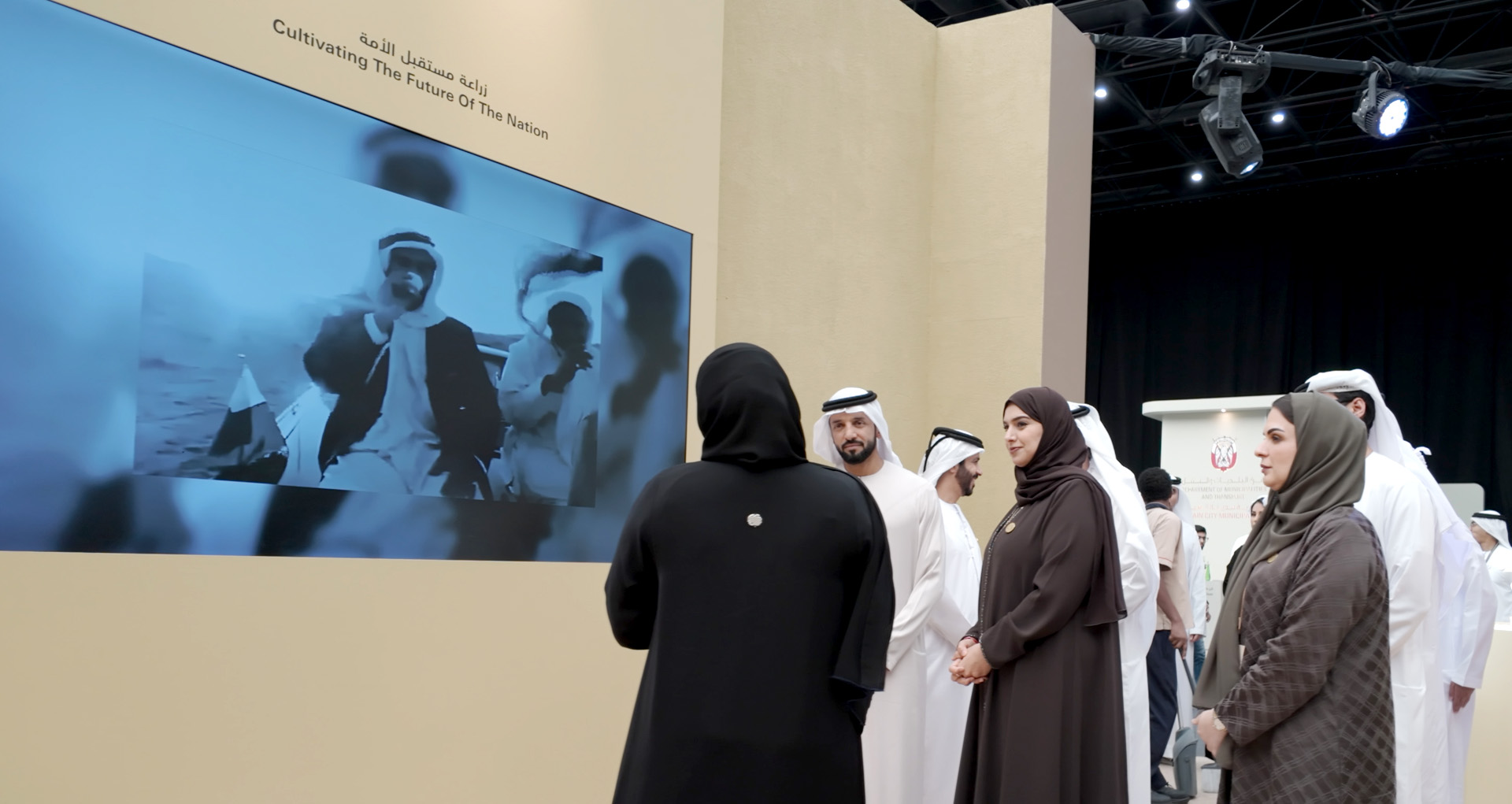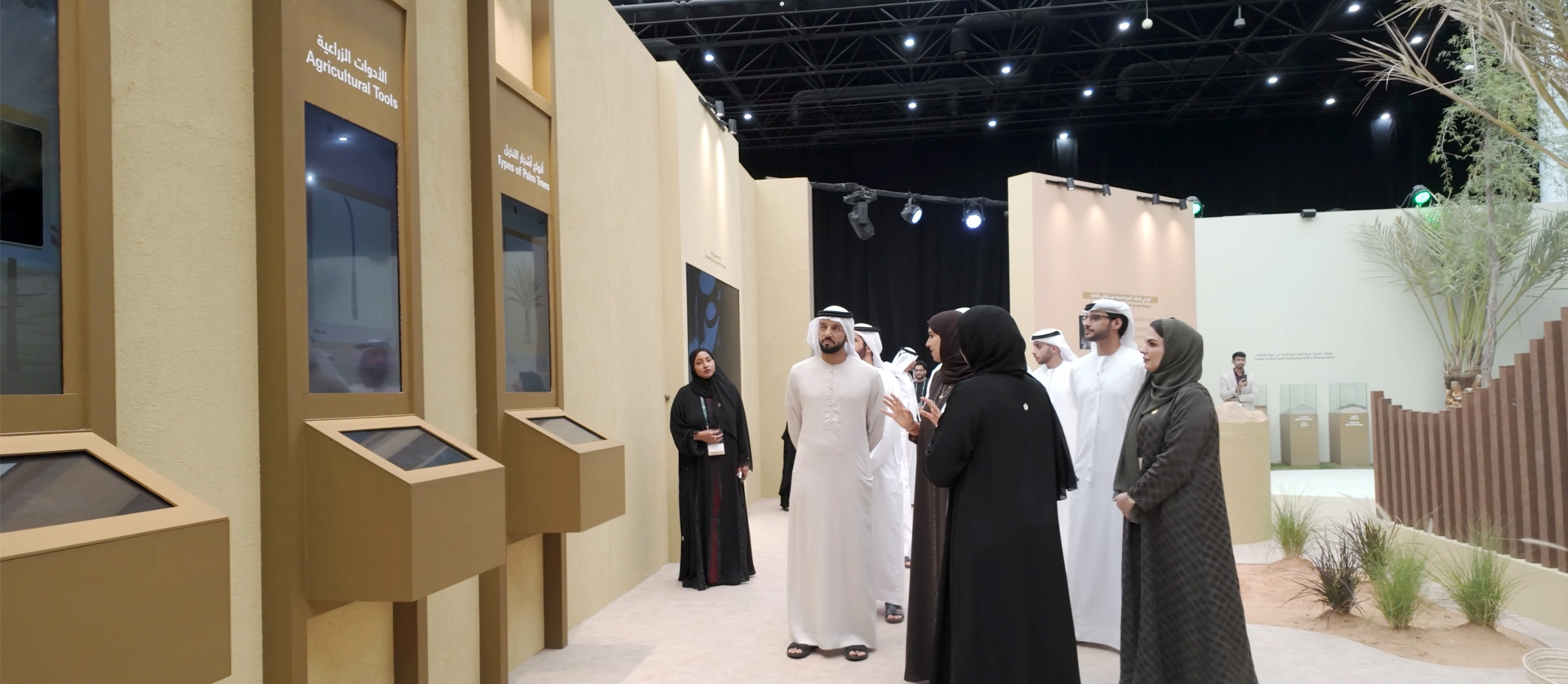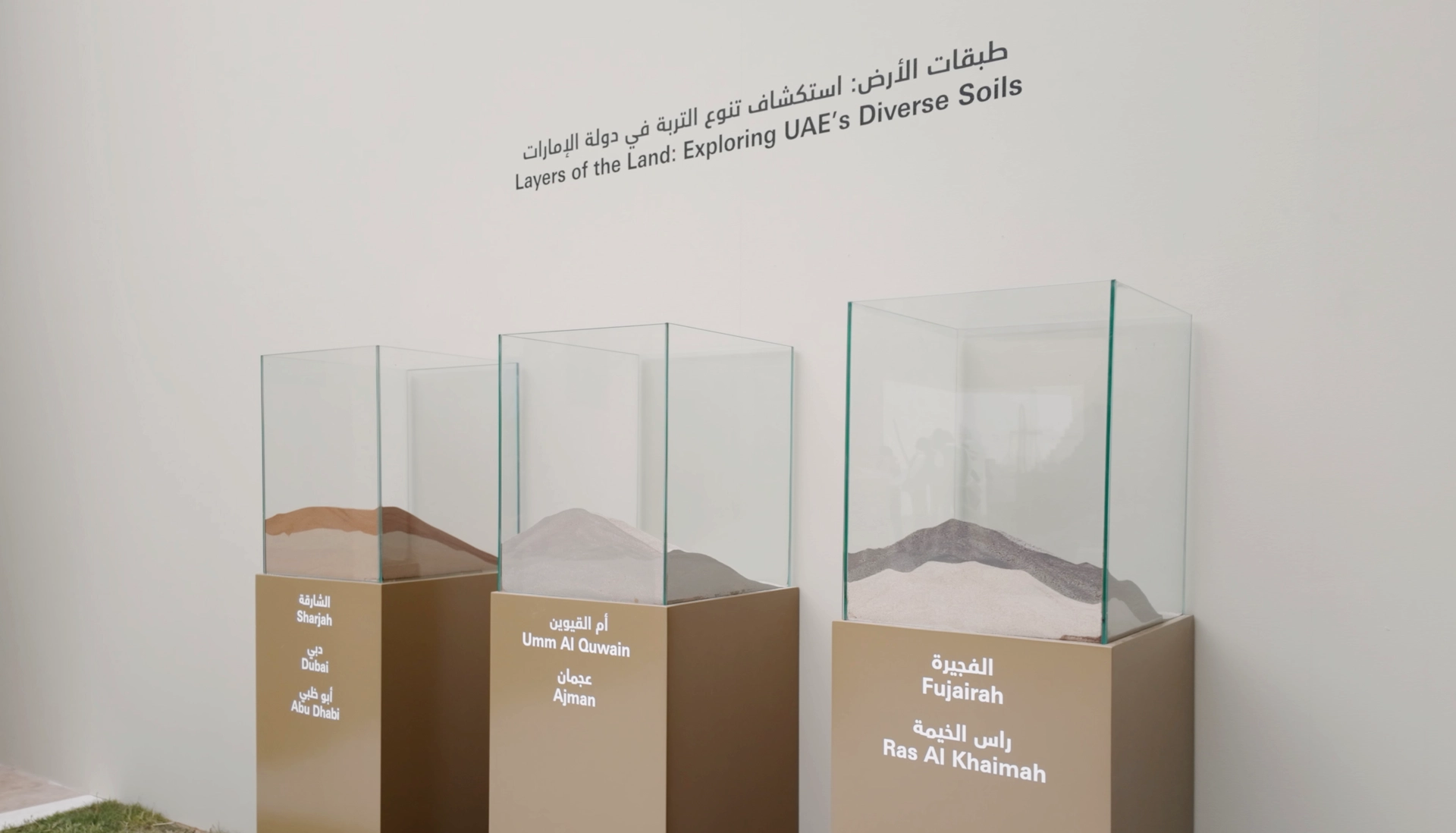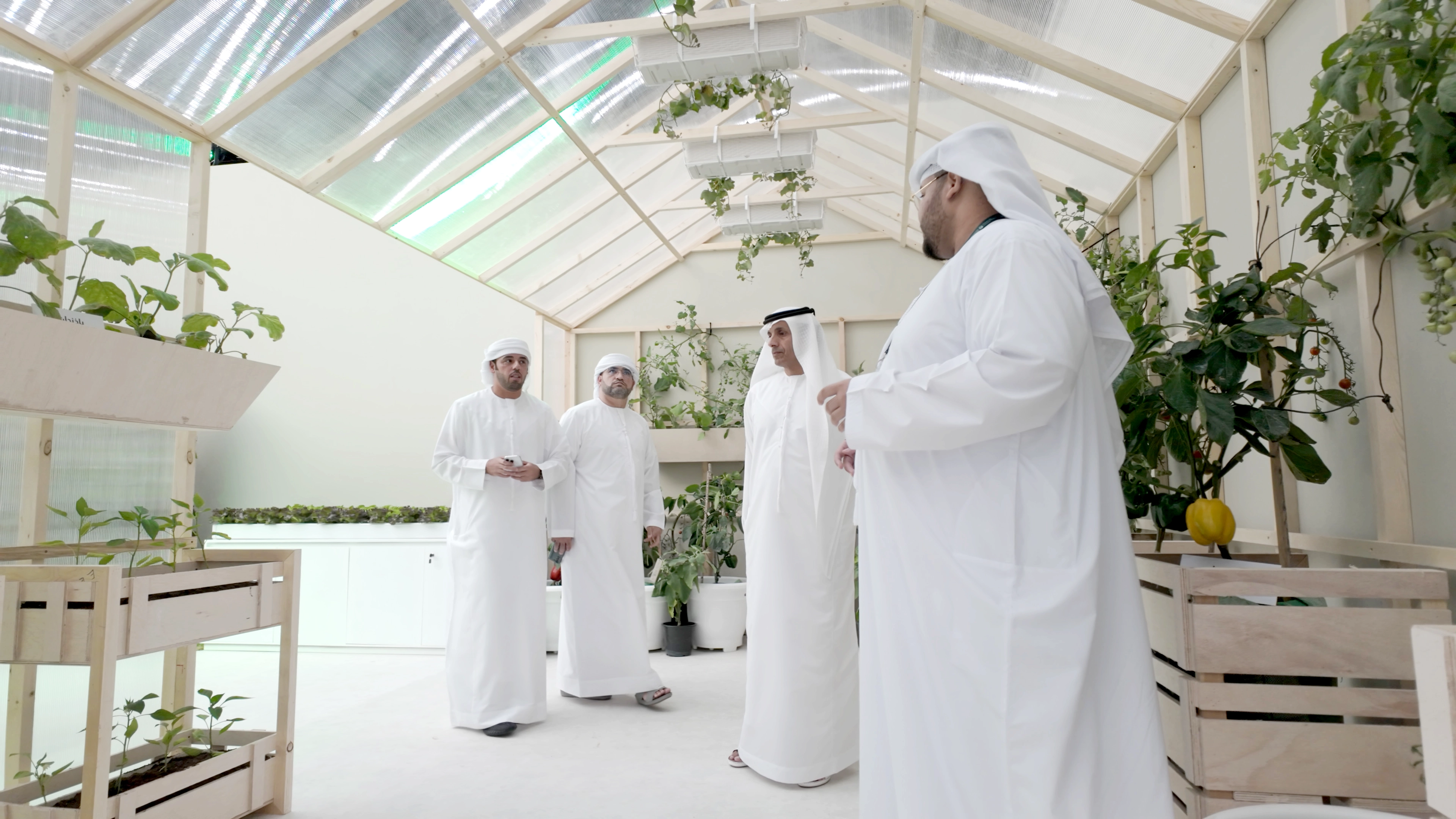The Ministry of Climate Change and Environment (MOCCAE) organized the Emirates Agriculture Conference and Exhibition 2025, held in Al Ain from May 29th to 31st. The event was designed to promote sustainable agriculture, food security, and public awareness through innovation, education, and cultural dialogue.
Ortmor was brought on board as the creative and experiential technology partner to design and deliver a series of immersive experiences for the exhibition. Our role was to translate the Ministry’s vision into interactive environments that could engage visitors of all ages, highlight the UAE’s agricultural advancements, and foster a deeper appreciation for the country's relationship with its land.
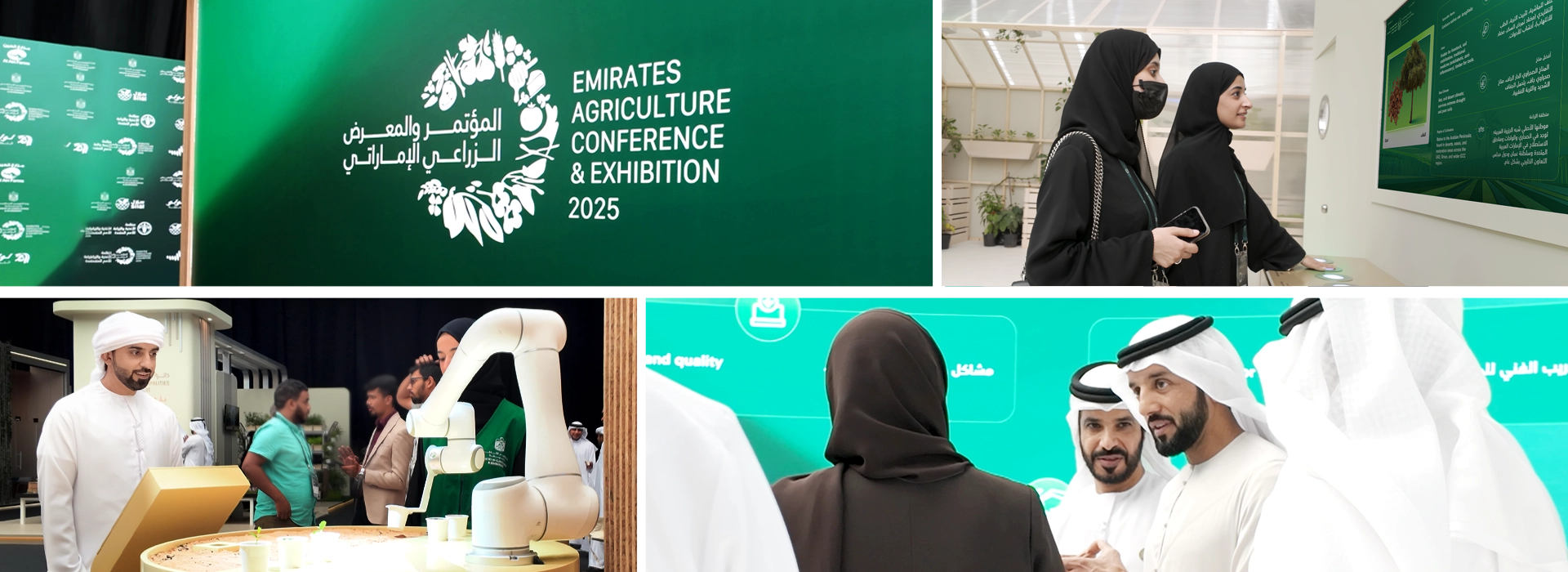
Client Requirements
MOCCAE sought to create an immersive, timeline-based experience that would anchor the visitor journey across the exhibition. The goal was to educate and inspire attendees by illustrating the evolution of agriculture in the UAE from its traditional roots and heritage practices, through present-day innovations, to its vision for a sustainable, technology-driven future.
The experience needed to resonate with a wide target audience that included farmers, investors, government agencies, scientific research institutions, and agricultural experts. It had to combine compelling storytelling with interactive and visually rich content, delivering both historical context and forward-looking insights. Clarity, accessibility, and cultural relevance were critical, ensuring the installation served as both a knowledge platform and a point of inspiration for ongoing collaboration in the sector.
Core Objectives 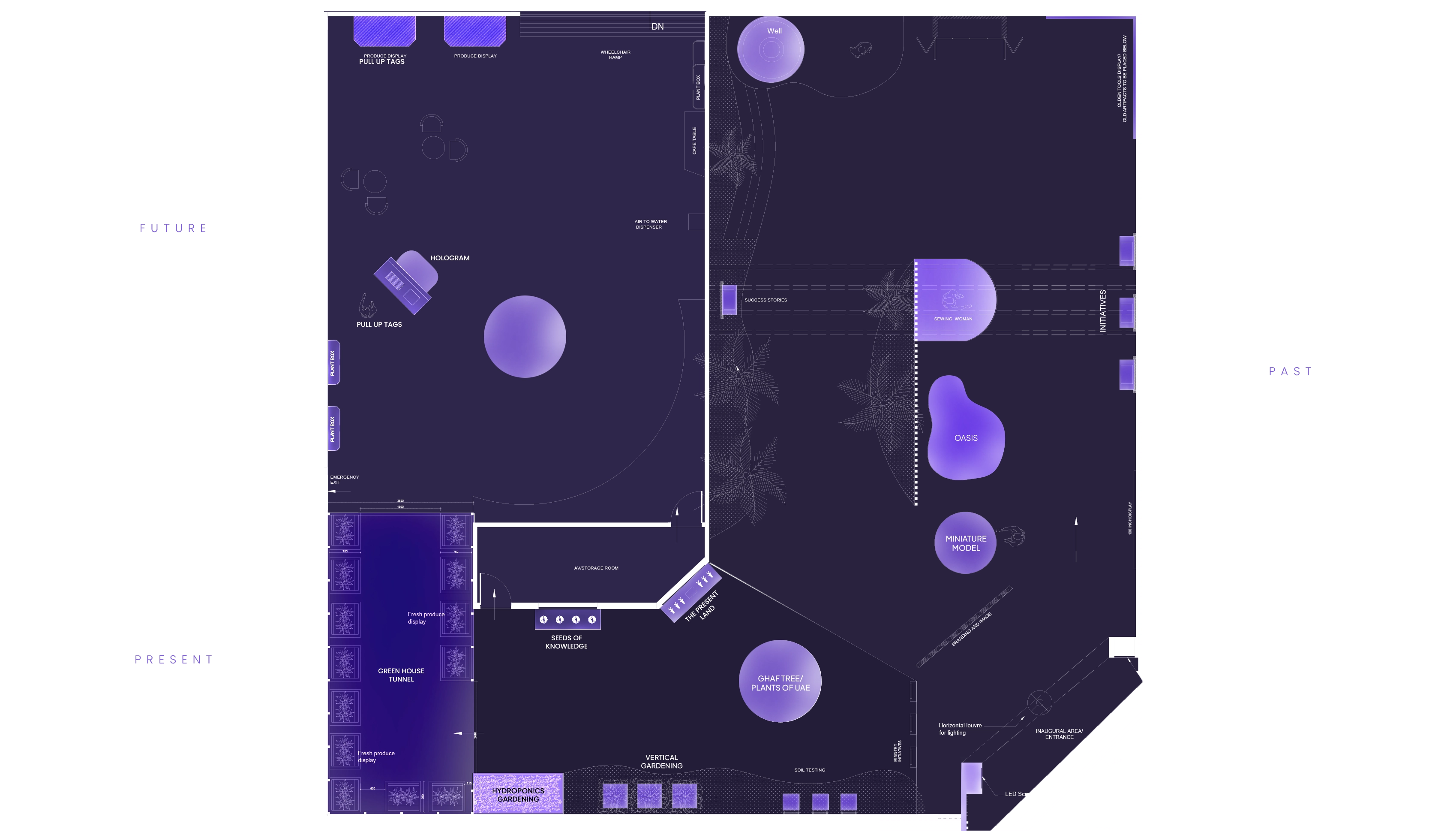
Ortmor was entrusted with conceptualizing and building a full-scale exhibition stand that tells the story of agriculture in the UAE past, present, and future. The experience was designed as a guided journey, divided into three distinct zones, allowing visitors to move seamlessly through time and technology.
To support this narrative structure, a detailed user flow diagram was developed to map the visitor journey from entry to exit, ensuring a smooth progression through all 14 curated exhibits. Each zone was carefully planned to balance educational value with visual and interactive appeal.
-
Create a spatial experience that transitions visitors through the three agricultural eras in a logical and immersive manner.
-
Develop experiences and exhibits that reflect historical practices, current technologies, and future innovations
-
Ensure the content is accessible and meaningful to a broad audience
This approach allowed the exhibition to not only inform but also inspire, leaving visitors with a strong sense of progress, purpose, and potential.
Key Challenges
One week to design the whole exhibition, the user journey, the story behind, and the 14 Delivering a large-scale, content-rich exhibition within an extremely tight timeline presented several challenges. Ortmor had just one week to conceptualize and execute the full experience, from storyline development and user journey mapping to content creation, 3D stand design, and final delivery across 14 unique exhibits.
-
Time Constraints: Only seven days to design, develop, and deliver the entire exhibition stand, including visual content, spatial layout, and experience flow.
-
Content Complexity: Translating advanced agri-tech concepts into simplified, engaging formats that could be understood by a general audience without losing technical accuracy.
-
Multilingual Accessibility: Designing a seamless multilingual touchscreen interface that was both informative and intuitive for diverse visitor groups.
-
Highlighting Local Innovation: Clearly positioning UAE-led initiatives in sustainable agriculture and food security amid a broader narrative.
-
On-Ground Execution: Managing the setup of digital hardware and physical components under tight logistical timelines, ensuring all systems were fully functional before opening.
Despite these constraints, the project was executed on time with a strong focus on quality, coherence, and user engagement.
Setting the Stage
Despite facing a tight timeline, we were able to successfully deliver 14 meticulously crafted experiences and exhibits, each thoughtfully integrated into a cohesive user journey.
Progression images
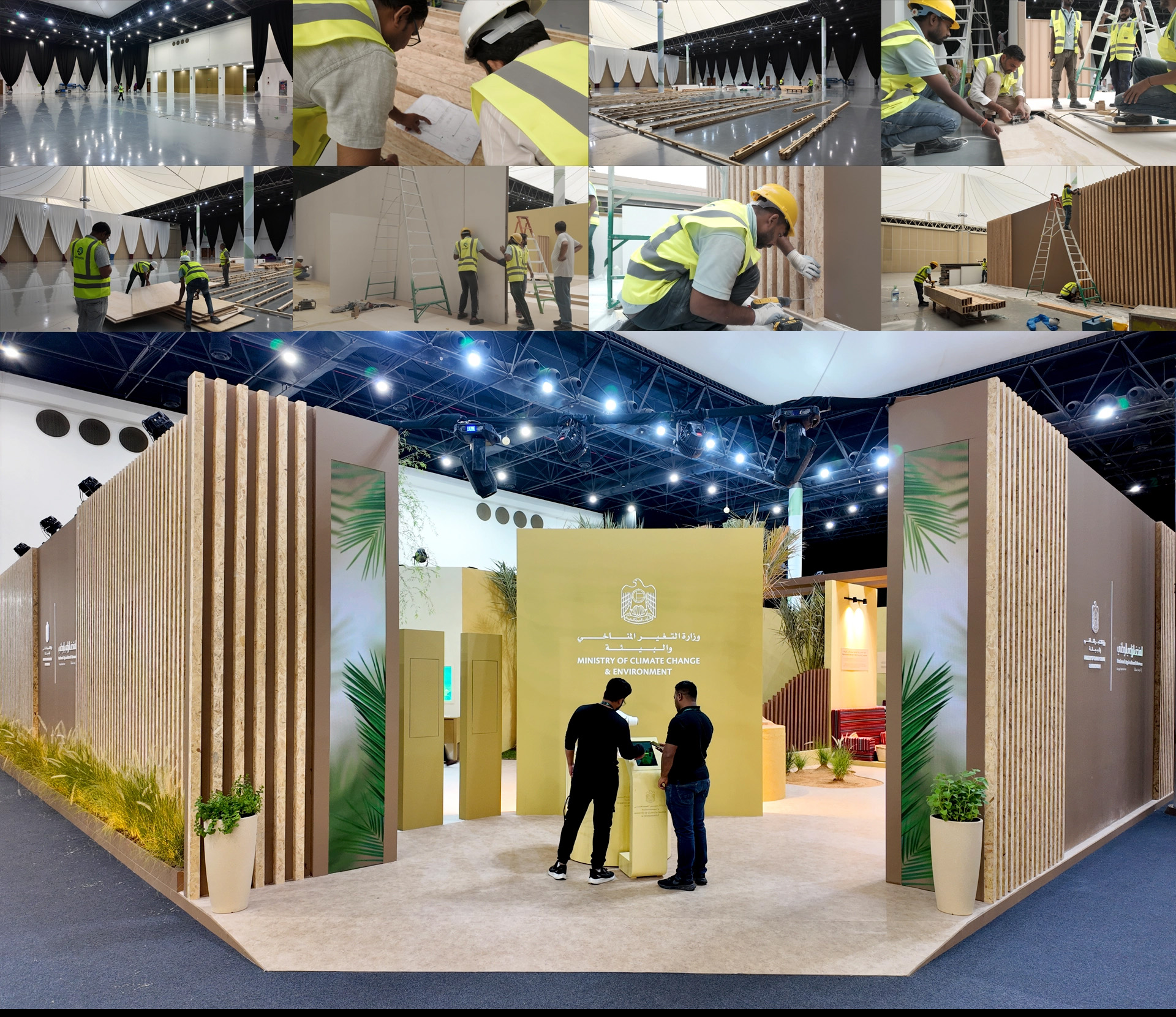
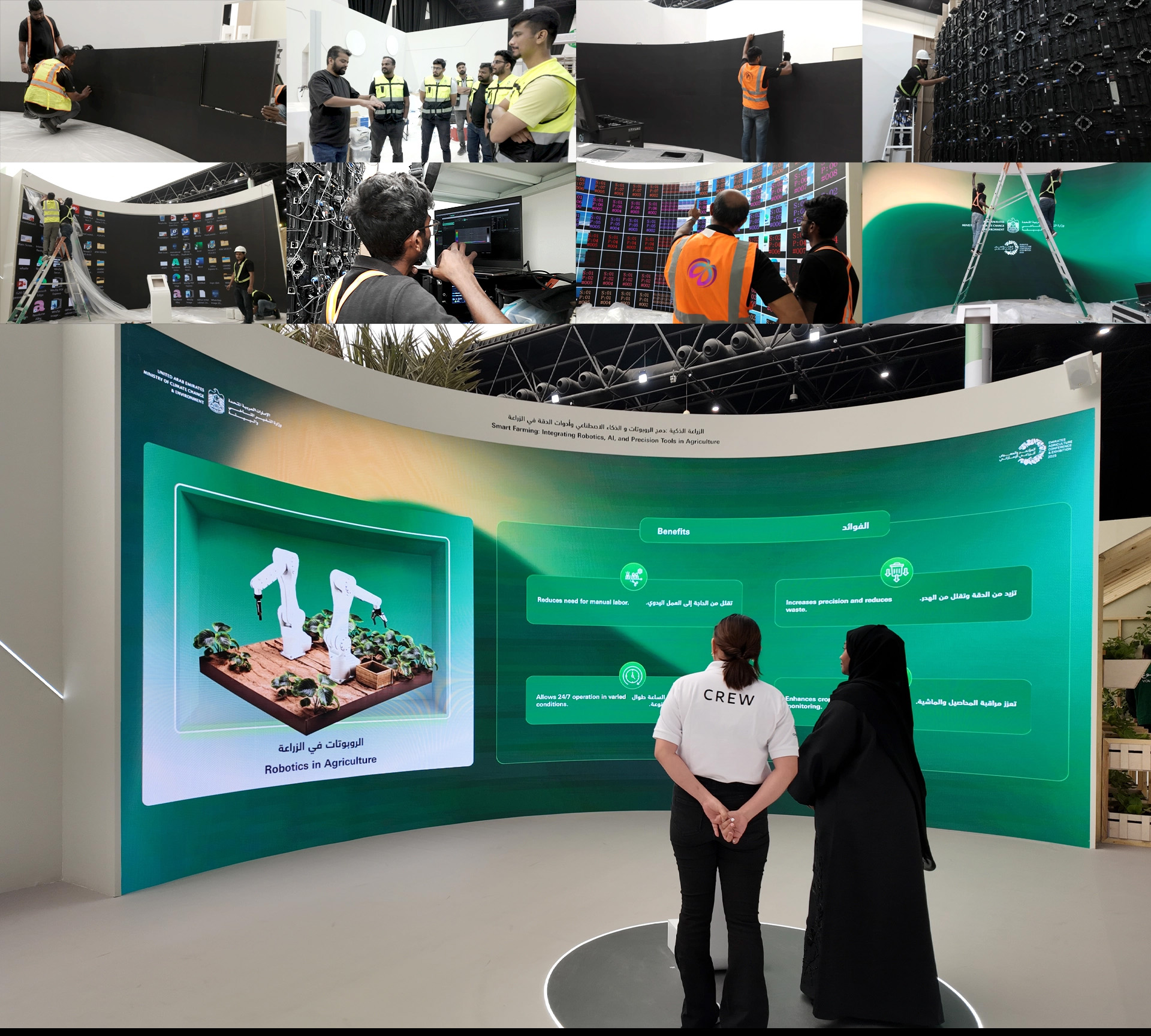
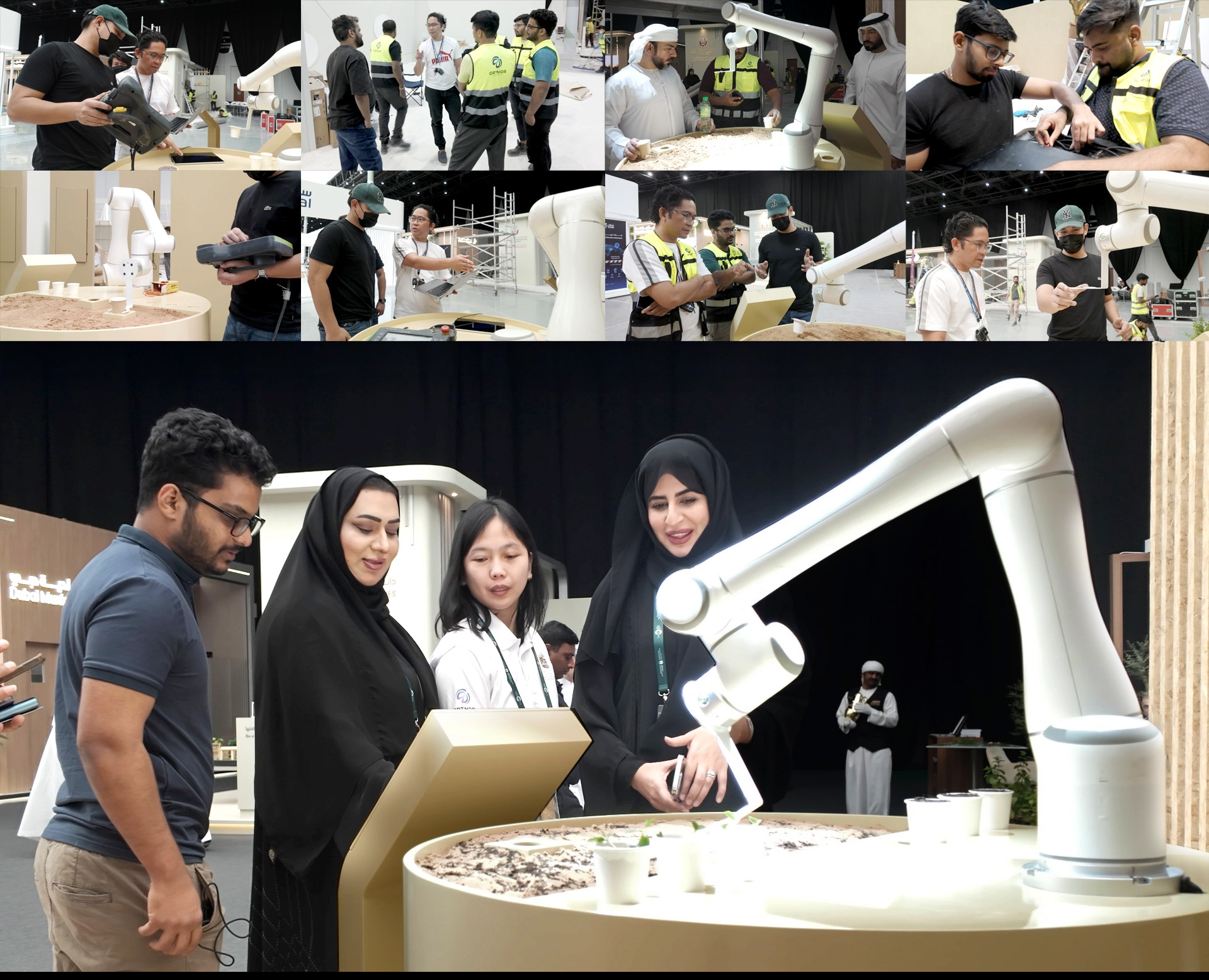
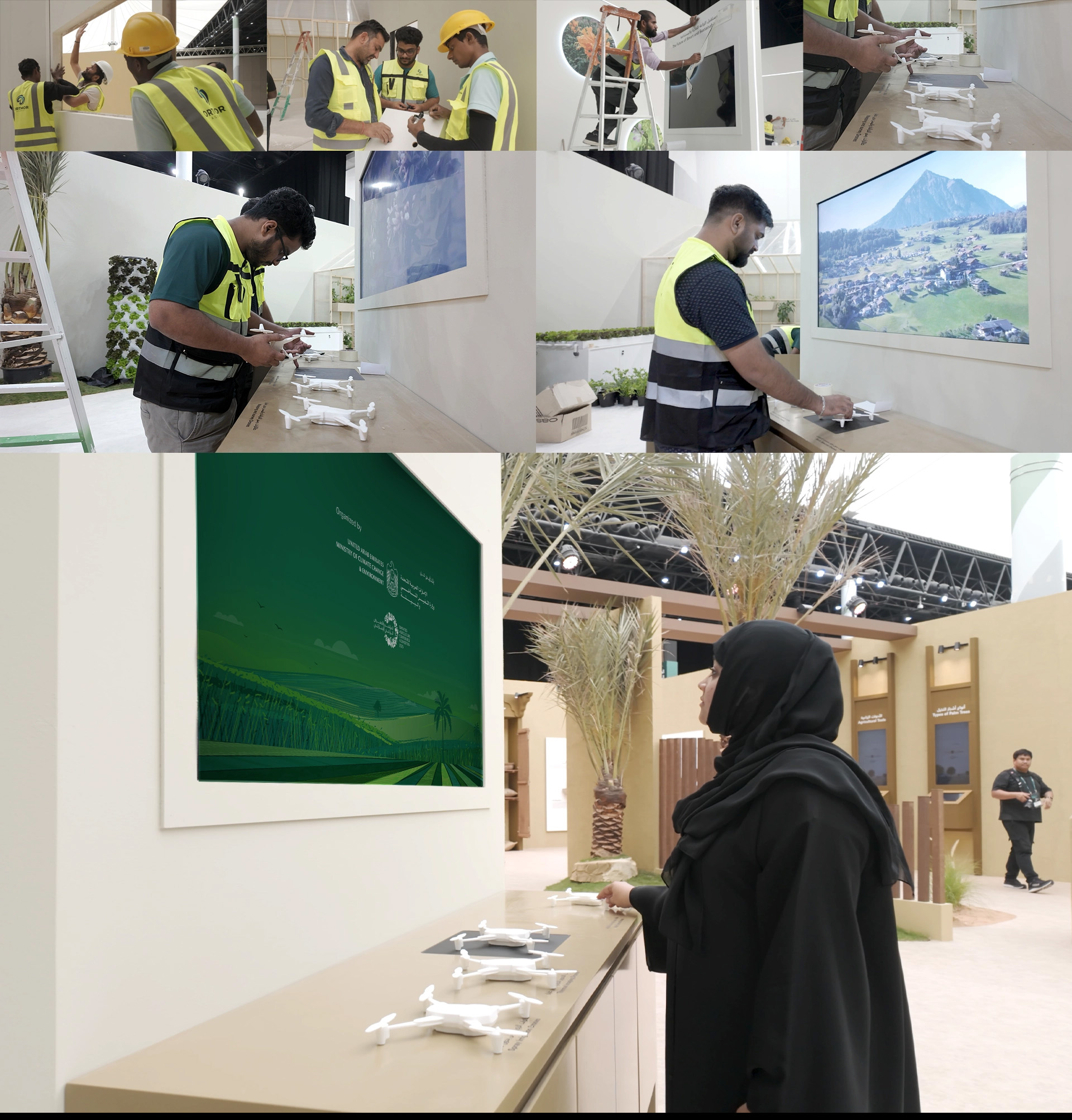
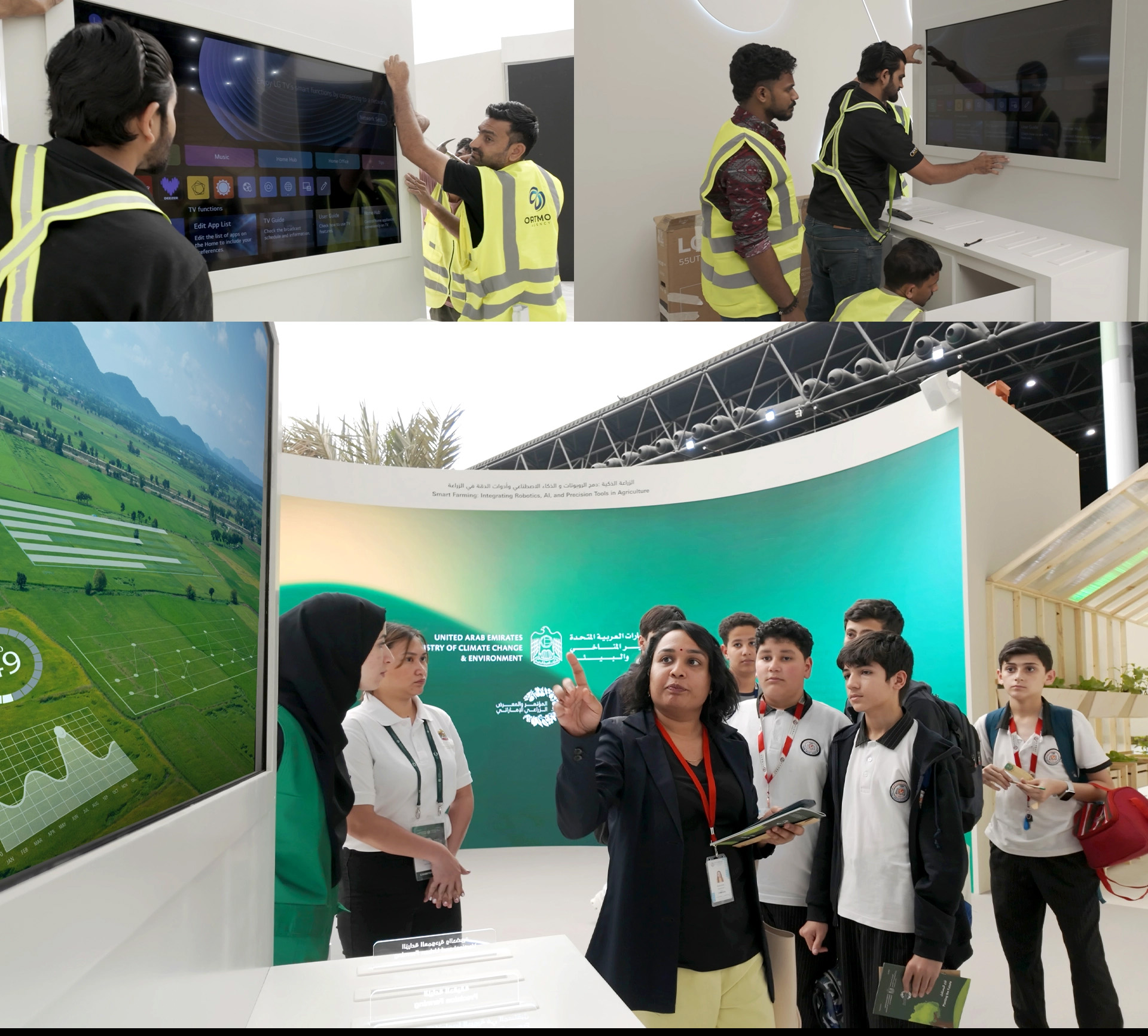
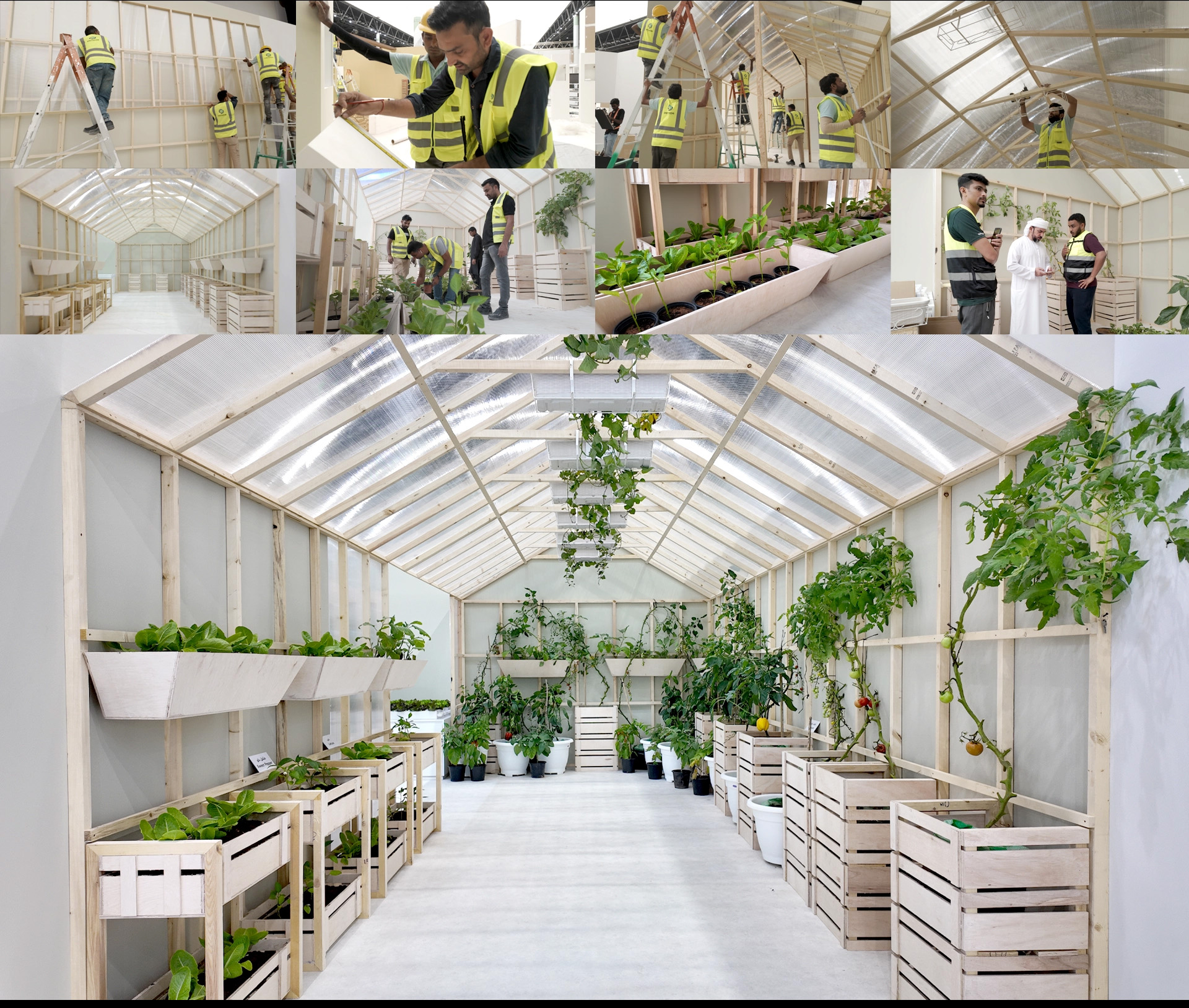
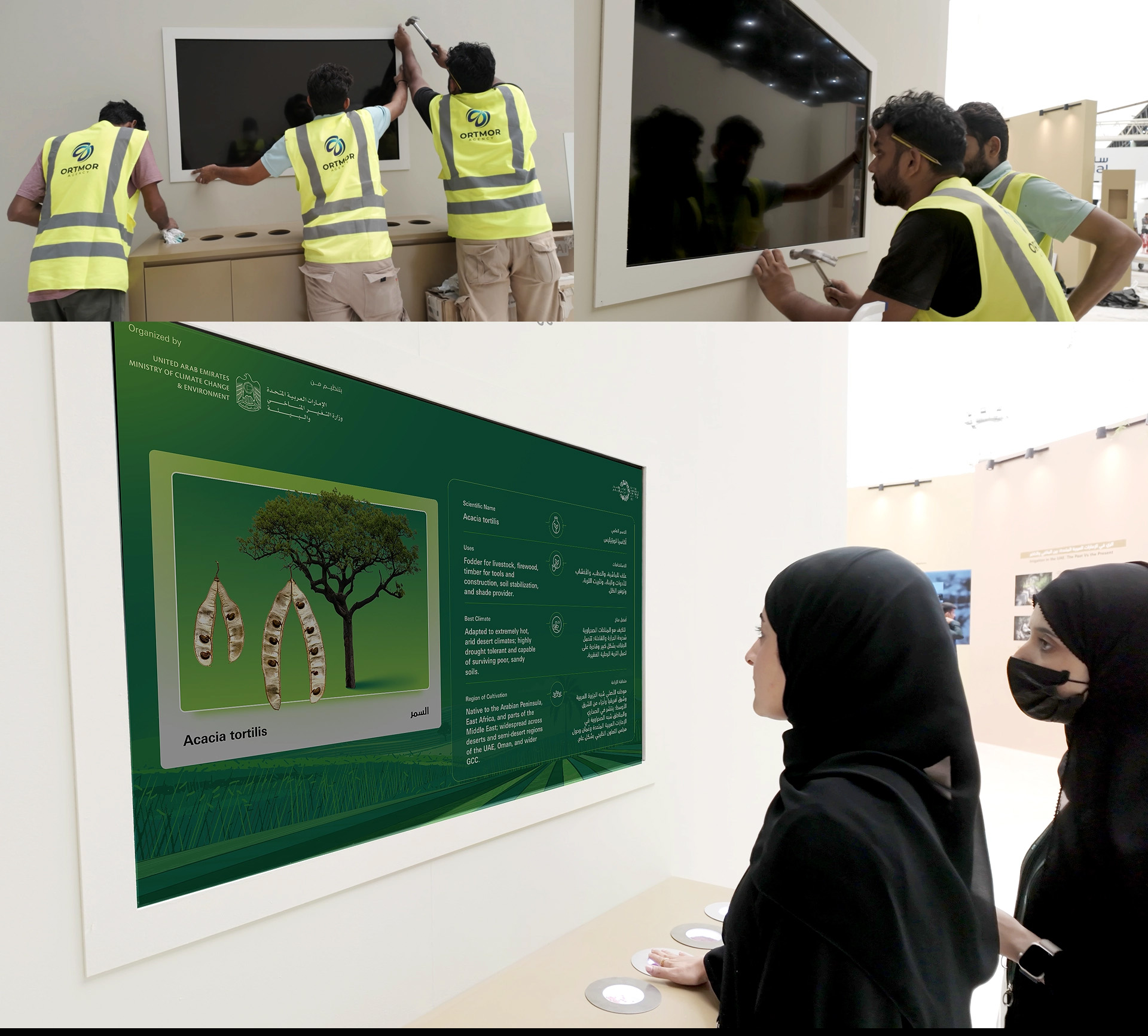
Experiences on Highlight
The user journey was meticulously crafted to offer visitors an immersive narrative that unfolds across three key chapters: the past, the present, and the future of agriculture and the food industry in the Emirates.
Smart Farming Robot
The experience centers around a robotic arm programmed to perform two key agricultural actions: planting seeds and carefully picking up saplings to place them in designated positions. The installation offered visitors a clear, hands-on view of how robotics is being applied to real agricultural processes. Simple yet captivating, it showed how technology can take on delicate, repetitive work with consistency, reducing manual strain and increasing efficiency.
Zone1: The Past
Emirates Agricultural Past
The first experience was a 100-inch TV screen showing a Documentary about the History of Abu Dhabi, UAE. Positioned at the start of the user journey, the video created a reflective mood, using archival footage, narration, and immersive visuals to convey the challenges and triumphs of the nation’s agricultural past.
Exploring Agricultural Heritage
This experience consisted of three touchscreen stations that introduced visitors to key elements of the UAE’s agricultural heritage. The first screen presented two short videos explaining the traditional Al Falaj irrigation system, highlighting its role in early water management. The second screen focused on agricultural tools used in the past, offering visual references and descriptions that illustrated historical farming practices. The third screen educated users on common types of palm trees in the Emirates, emphasizing their cultural and agricultural significance. Collectively, the touchscreens provided a concise yet meaningful overview of traditional knowledge systems that shaped the foundation of agriculture in the region.
Tools of the Past
This area featured a curated exhibit showcasing traditional tools once used in the Emirates’ agricultural sector. Arranged in a dedicated display zone,the tools were presented with clear labels, allowing visitors to observe the materials, design, and functionality up close. The physical layout encouraged a walk-through experience, creating an authentic sense of stepping into the past.
Emirate’s Agricultural Stories
This touchscreen experience featured three videos that offered visitors a deeper understanding of the UAE’s journey in sustainability and agricultural development. Among them was “Zayed: Story of the Land & Sustainability”, which highlighted Sheikh Zayed’s pioneering environmental vision and its lasting impact. Together, the videos showcased the nation's legacy, current efforts, and forward-looking strategies in sustainable farming, providing an informative and reflective pause within the larger exhibition narrative.
Zone 2: The Present
Present-Day Agriculture & MOCCAE Initiatives
This touchscreen experience highlighted the UAE’s ongoing efforts in agricultural innovation and sustainability. It featured MOCCAE’s current initiatives aimed at enhancing food security, alongside informative modules comparing traditional and modern methods of date manufacturing. Visitors could also explore a database of local plant species, including their scientific and family names, showcasing the country’s rich botanical diversity. The experience further introduced cutting-edge farming techniques such as hydroponics and vertical farming, offering insight into how the Emirates is adapting to environmental challenges with resource-efficient solutions.
Soil from the Seven Emirates
This experience featured a physical map of the seven emirates, placed behind a row of seven glass boxes—each containing soil collected from a different emirate. Arranged in correspondence with the map layout, the display allowed visitors to observe and compare the unique textures, colors, and compositions of soil from across the country. By presenting the natural diversity of the land in a clear and tangible format, this experience offered a grounded perspective on how geography and environment influence agricultural practices across the UAE.
Harvest of the Emirates
Visually engaging display of fresh produce commonly cultivated across the Emirates. Organized in open baskets and structured arrangements, the exhibit highlighted the diversity and quality of local crops, from leafy greens to root vegetables and fruits. The layout mimicked a traditional market stall, inviting visitors to experience the richness of the local harvest up close.
Smart Drone Farming
This experience allowed visitors to engage with physical models of agricultural drones through a simple pick-and-place interaction. When an object was placed on the designated scanner, related information appeared on the screen, introducing different drone technologies used in modern farming. The experience combined tactile exploration with digital content, offering an intuitive way to learn about innovation in agriculture.
Seeds of Knowledge
In this experience, a variety of tree and vegetable seeds were physically displayed across the exhibit. When a visitor touched any of the seeds, corresponding information, such as plant type, uses, and growth conditions, appeared on the screen nearby. This tactile interaction encouraged curiosity and offered a simple yet engaging way for users to explore the diversity of plant life and understand the importance of seed selection in agriculture.
Zone 3: The Future
Immersive knowledge Hub
This experience featured a touchscreen tablet that allowed visitors to browse and select from a range of agriculture-related topics. Upon choosing a subject, detailed information appeared on the screen, offering insights in a clear and accessible format. The setup provided a self-guided learning experience, giving users the flexibility to explore content at their own pace and based on their interests.
Tags of Knowledge
This experience featured a series of topic-based tags placed neatly along a display. Visitors could pick a tag of interest and place it onto a scanner, triggering related information to appear on the screen. The simple experience made it easy for users to explore various agricultural topics in a tactile and engaging way, encouraging active participation and personalized discovery.
Farming Futures in Hologram
This holographic experience showcased the role of automation and robotics in modern agriculture. Visitors watched projections of autonomous farming systems and smart agricultural robots in action, highlighting how technology is streamlining tasks across crop and livestock management. The experience offered a forward-looking glimpse into efficient, tech-driven farming practices shaping the future of the industry.
Final Outcome
Ortmor successfully delivered a flagship experience for the Emirates Agriculture Conference & Exhibition 2025, transforming 14 complex themes into immersive, high-impact zones. The event, held under the patronage of HH Sheikh Mansour bin Zayed Al Nahyan, attracted thousands of visitors and delivered strong engagement across all audience segments.
Visitor feedback was overwhelmingly positive, and key stakeholders, including MOCCAE, FAO, and Sheraa, praised the clarity, execution, and storytelling throughout the space. From concept to installation, Ortmor led every stage, solidifying our position as a trusted partner for national-scale, experience-driven exhibitions.

